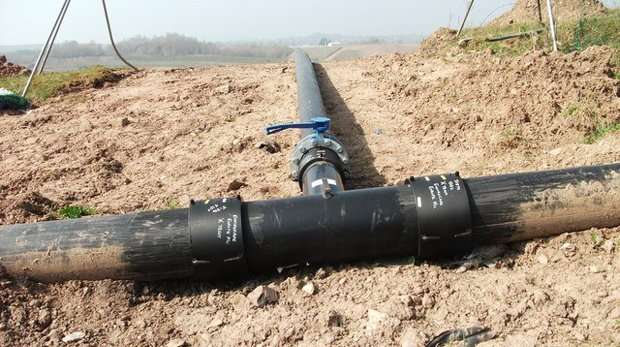New measurement method for replacement of gas and water network

Twente PhD researcher Emiel Drenth has developed a method to determine the remaining service life of gas and water pipes. His method, which is known as micro hardness indentation, can be used on pipes made of rigid PVC (uPVC). The Netherlands' gas and water distribution network was largely built in the 1960s, and parts of it have already exceeded their anticipated service life. Network managers are now considering whether it is really necessary to replace these parts of the network, or whether they can continue to be used. Drenth's new method can help to answer this question.
Gas and water pipes in the Netherlands are made primarily of unplasticized polyvinyl chloride (uPVC). These make up around 21,000 km (20%) of the gas distribution network and 60,100 km (48%) of the water distribution network. At the time when they were installed, in the 1960s, their estimated service life was fifty years. "Replacing the pipes on the basis of the service life originally expected would involve a huge amount of work and would be a very expensive project," explains Drenth. "It would be preferable to replace these pipes gradually, but this is only possible if we can be sure that the security of the network will not be compromised. So the question that we're currently looking at is which parts are still functioning well and which parts really need to be replaced. That's the knowledge that we're currently missing."
Costly damage due to pipe failures
Network managers are currently conducting research into the condition of gas and water pipes. This is done in a 'destructive' way. "They expose a pipe, saw through a section of it and place caps over both ends," explains Drenth. "Then the section of pipe is subjected to extreme pressure. As a form of testing, it couldn't really be much more destructive. But in recent years we've seen that it can go terribly wrong."
Drenth cites a recent example in Amsterdam, where a water mains failure at the VU Medical Center meant that hundreds of patients had to be evacuated. Total damage: around fifty million euros. A residential area in Apeldoorn also had to live without gas and water for a few days. There, too, the damage ran into the millions. "And there have been plenty more minor incidents where the failure of water mains pipes has led to localized street flooding."
Preventive action at right time
Drenth's new measurement method is primarily designed to predict how long a pipe can last, so that preventive action can be taken at the right time. This will enable network managers to work more efficiently, cut costs and avoid incidents or even disasters. Some pipes will need to be replaced, while others can carry on being used for decades. "To find out what condition these pipes are in, you need to know exactly what to measure. My method focuses on mirco hardness, which is measured using small indentations that are not harmful to the pipes. To determine the remaining service life of the pipe, you need to know about the aging process of the material and when the critical limit has been reached."
Inspection robot
Drenth's method has to be carried out using an inspection robot like the one designed and built by UT robot scientist Edwin Dertien. "This kind of measurement technique is crucial for us," says Edwin Dertien. "Our inspection robot focuses primarily on the orientation in the pipeline, but this could be a next step in the actual collection of data on the condition of the gas network."
Drenth's method is being followed by those who manage the Dutch network with great interest. "We're getting very close to the point where we can start to put these methods into practice and I hope that we can work with the various parties involved on making a prototype."
Provided by University of Twente



















